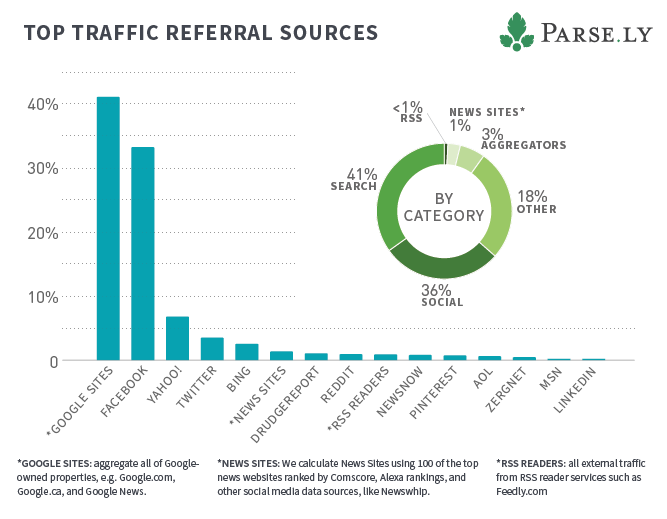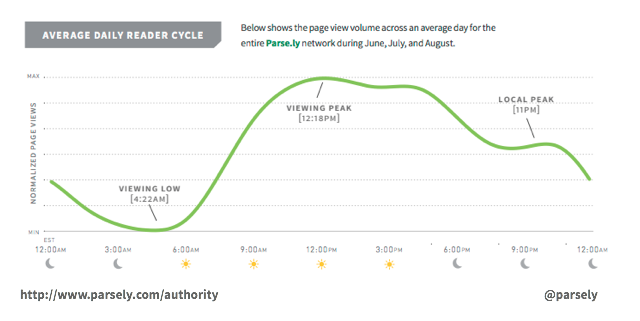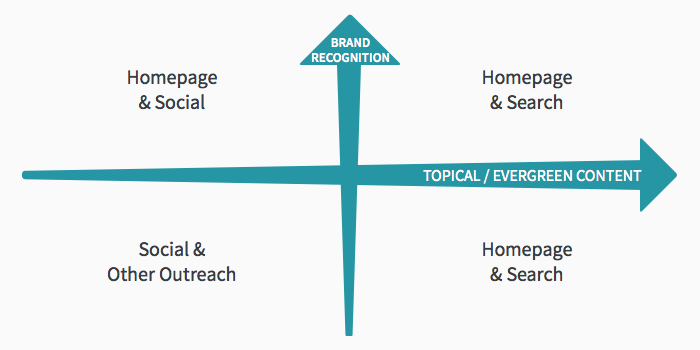6 Questions Every Audience Development Editor Must be Able to Answer
Finding your target audience has gotten infinitely more complicated since the rise of digital media.
We’ve all been at a family reunion where grandma or grandpa waxes poetic about how hard things were in the “old days.” In the case of news media distribution, the younger generation can return the quip to their elders — you guys had it so easy.
While newspaper distribution required little more than publishing the paper and delivering it to a subscriber’s doorstep, publishers must now navigate a complicated, fragmented and continually evolving digital landscape to find their audience, and this responsibility usually falls to an audience development team.

Search engines and social media companies have stepped between publishers and their audiences. A quick look at data from Parse.ly’s network of publishers shows that the majority of a site’s off-site traffic can be grouped into a few basic sources — with search and social leading the way.
While newsrooms should be mindful of all audience sources, time and resources are not infinite. Publications that succeed today find out what type of content their audience wants, when they want it and where they want it. It’s clear that social and search dominate a significant portion of the “where” question.
How do you know which distribution channels will lead to more readers, and more importantly, the right kind of readers? Each publication and audience is different, but here are six questions to ask yourself or your team when making decisions the best ways to find your audience.
When and where does my ideal audience want to see my content?
In addition to knowing the breakdown of referral sources to your site, understanding the “when” matters too. There are general trends as to when an audience is likely to read, as Parse.ly found out by looking at data in a recent Authority Report.

Be aware of the general trends for timing, devices and social platforms such as Facebook and Twitter, but make sure to also know how those trends differ from your audience.
Does this type of story work better on search or social?
Every publication would like to be the most shared and liked on social media. They’d all like to be the first to show up in search engine results, too.
While it’s possible to do well in both, some types of content simply do better on social media, while other content is more likely to show up in search queries.
Consider BuzzFeed. They built a media empire out of social-friendly content. If you haven’t seen one of their stories on Facebook it can only be because you don’t have a Facebook account. However, search engines aren’t a huge traffic source for BuzzFeed because the “surprising, delightful or intriguing” content they produce isn’t necessarily something readers think to search for.
How many people searched for “Egyptian coup told with Jurassic Park gifs?” I did to find the link to the story, so my guess is I’m the first, but this post probably generated enough #LOLZ on social media to get shared 4.3K times.
On the other side, topical news stories tend to do better in search than in social. Many people search “2016 election” because they have a pre-inclination to want to know about it, but a lot of people shy away from sharing election coverage on Facebook so as to avoid igniting a political debate with people they hardly know.
You’re probably familiar enough with your content to know whether it’ll succeed in different channels, but there’s a ton of research on what motivates people to share stories on social media that can help.
How much can we rely on our existing media brand?
“Authority” is a huge factor in search engine results, and much of that is determined by the sheer number of links across the web that lead to your site. Because of this, search engines tend to favor legacy media that produce a large quantity of content.
But that won’t get you to the top alone. If you’re in the SEO game, attention to detail is everything. Bloomberg topped the search engine for the SCOTUS healthcare decision by getting the story out 6 seconds sooner than its competition.
Having a strong brand will also help drive homepage and internal referrals. Despite the dismissive talk about homepages lately, a number of legacy media brands have put money into redesigns of their website. Why?
These companies know their brands are a destination in themselves for many readers, particularly ESPN, which has a seeming monopoly on comprehensive sports coverage. Having a fluid homepage experience — especially one that optimizes for mobile — can help achieve the difficult task of pulling readers away from Facebook for a bit.
A new media site can pull someone in with a single story, but if the reader doesn’t know the brand, they might just leave after reading the story.

That doesn’t mean new brands can’t compete. Evergreen stories can help keep new media in the search loop; Business Insider takes the top spot when searching for “how to a pack a suit,” something its core audience of young professionals needs to know.
What does your core audience search for? Detailed and thorough keyword research can help increase search traffic.
What’s our business model?
If the business objective of your publication is to serve an advertisement and the ads don’t get served, there’s no business and no journalism.
Revenue sources should be considered when crafting a distribution strategy because you absolutely don’t want a strategy that diverts from your ability to add to the bottom line.
A trendy thought in media right now is that the homepage is “dying.” A manager might hesitate to put resources into building and maintaining the homepage as a result, but if display ads or subscriptions are the primary source of revenue, this wisdom doesn’t hold.
Conversely, If native advertising is a big part of a publication’s business model, it might make more sense to put resources into having a strong social media presence. Native ads don’t necessarily need a fancy homepage; the reader just needs to get to that specific piece of content, and social can efficiently achieve that.
Can I diversify our referral sources?
Just like with a stock portfolio, diversifying sources of traffic can limit your exposure to various risks. Google and Facebook have been fantastic sources of traffic for news media, but the public has no say in how the algorithms work, and we’re rarely even alerted when the algorithm changes.
If a company is too reliant on search engine results, a tweak to the algorithm can have disastrous consequences for web traffic and cause precipitous drops in the company’s stock price as a result.
Striking a balance between social, search and the homepage can help guard against this. Ideally, a mature media company would get roughly an equal amount of traffic from all three.
How do we stack up against other media sites?
Brand equity and the nature of content are the leading indicators of where resources should be allocated when it comes to content distribution.
I put together a graph that weighs these two factors against each other. Find where you land on the map, and that should give you a general idea of what distribution strategy works, given your circumstances.

If your outlet falls in the top left quadrant, it’s possible a strategy that emphasizes your homepage or internal pages and social networks works best. Conversely, if you’re in the bottom right, it’s probably best to start with search engine optimization to bring in new readers, while making sure you’re pushing them through to additional, relevant content.
How does your newsroom decide where to put resources? We want to hear your story! Email us at hello@parsely.com if you have a audience development story that you want to tell.
Article image by Duncan Hull via Flickr.